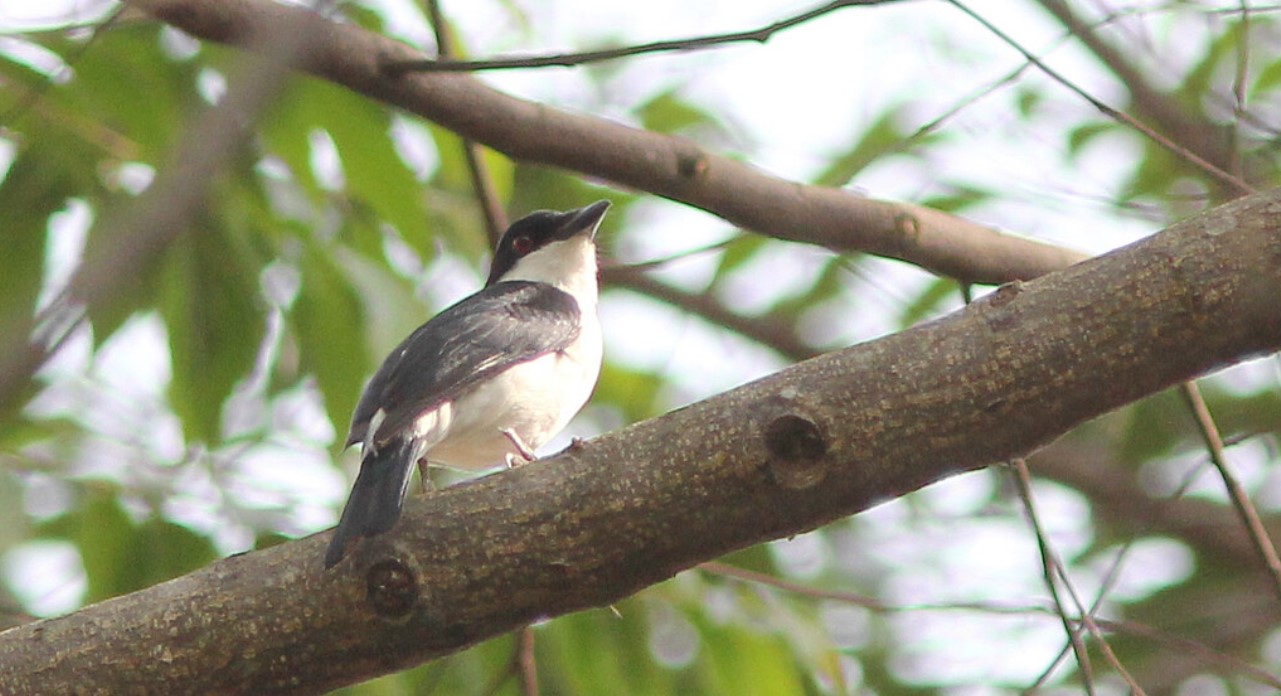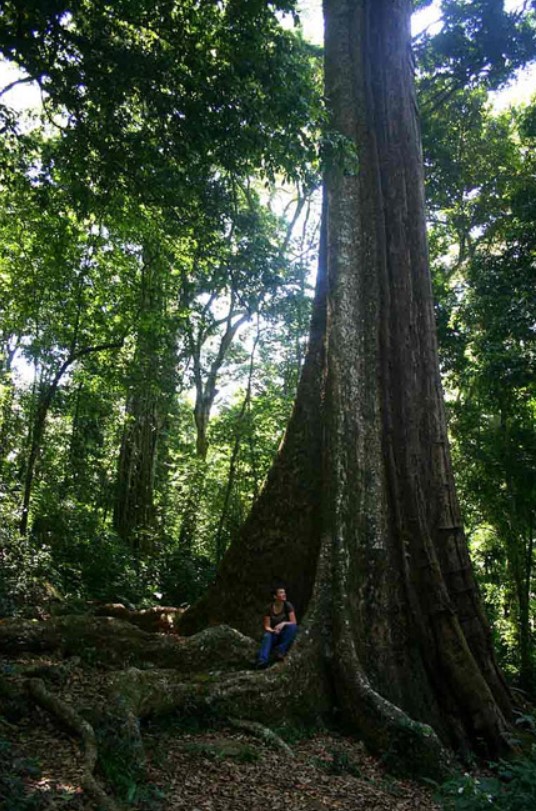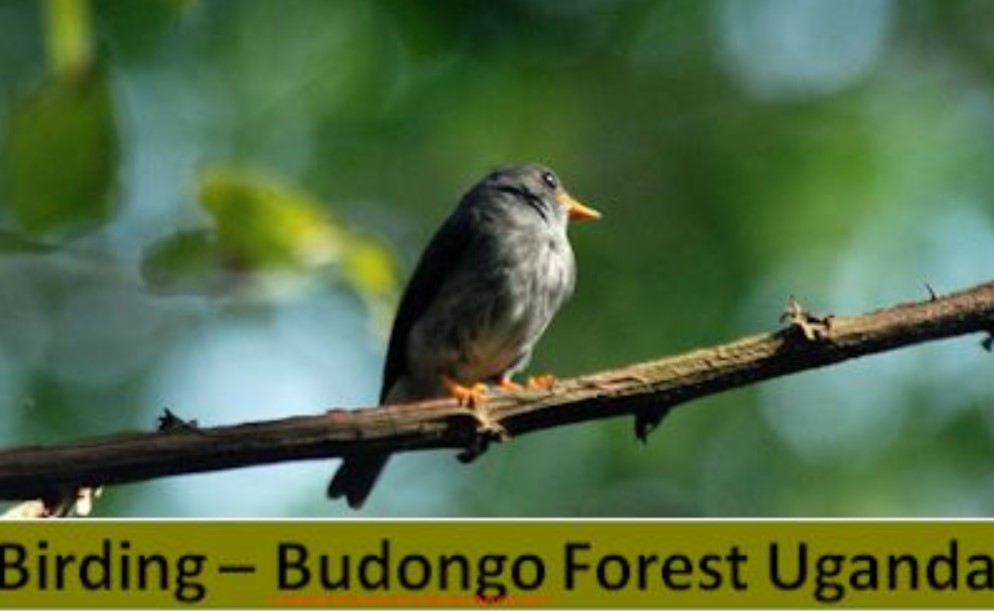
Budongo Forest Reserve
Where is Budongo Forest reserve found? The Budongo Forest, located in Masindi district, Northwestern Uganda, is a remarkable natural rainforest that forms part of the extensive Murchison Falls National Park, on an escarpment northeast of Lake Albert. Budongo Forest is the largest natural tropical rainforest reserve in East Africa, covering an area of about 826 square kilometres, covering a surface area of 825 square kilometres, and extending across Masindi, Hoima, Bulisa, and Kikuube districts. The forest spans an impressive 82,530 hectares and serves as a catchment for Lake Albert, contributing to its water supply. Four rivers flow through Budongo Forest, emptying their waters into Lake Albert, including the rivers Sonso, Kamirambwa, Siba, and Waisoke.. The forest area is a well-known vacation spot for chimpanzee safaris and nature walks. The forest is under the management of the National Forestry Authority (NFA). It is a vital ecosystem with rich biodiversity and significant conservation efforts. In addition, it exists in three main tourism sites: Busingiro, Kaniyo-Pabidi, and Sonso sections.
History of Budongo Forest Reserve
The political unrest of the 1970s and 1980s (civil wars) resulted in untold losses across the country, as evidenced by Professor Reynolds 1988 report on the smuggling of baby chimpanzees into the Budongo Forest. In addition, Professor Reynold went a step further and mobilised funds from the Jane Goodall Institute for acclimatisation of the remaining chimpanzees and better housing in Budongo Forest to restore the lost glory of the few remaining chimpanzees. During World War II, Budongo provided shelter to Polish refugees, and remnants of their stay can be found, including a Catholic church.
After researching chimpanzees in Budongo Forest in 1962, Professor Reynolds Vernon launched the Forest Project in 1990, which later evolved into the Budongo Conservation Field Station. Following the Budongo Forest Project, Dr. Babweteera and Prof. Klaus Zuberbuhler attracted more staff members, including Dr. Plumper Andrew, who conducted extensive research on the forest and its fauna. Budongo Conservation Station now funds scientific studies on forests and wildlife studies, in addition to providing donations and teaching about conservation. This has made a significant contribution to the growth of the conservation sector. Due to this, Uganda’s Budongo Conservation Station has gained a reputation as a world-renowned hub for research and environmental preservation.
Ecological Richness
This is a remarkable natural treasure with unique, fascinating, and distinctive features about this lush and diverse forest. Budongo Forest is classified as a moist, semi-deciduous tropical rainforest. It consists mainly of medium-altitude, semi-deciduous forest, interspersed with patches of savanna and woodland. The forest is home to an abundance of flora and fauna, including: over 360 bird species (such as the rare Nahan’s Partridge), Senna spectabilis trees (known for their white bark). There are approximately 20 species of amphibians, 292 butterfly species, 130 moth species, and 465 tree species. A diverse array of over 24 mammals, including 9 primate species, chimpanzees, blue monkeys, grey-cheeked mangabeys, and red-tailed monkeys, not forgetting buffaloes, bush elephants, and Uganda kobs. An estimated 600 chimpanzees call Budongo Forest their home, making it an excellent destination for chimpanzee trekking.
Noteworthy Features of tree species
The Budongo Forest is a treasure trove of biodiversity, with unique and fascinating tree species that thrive within this lush rainforest.

East African Mahogany (Khaya anthotheca)
The forest was once abundant with these majestic mahogany trees. An exceptionally large mahogany tree still stands, towering at over 80 metres in height and boasting a circumference of about 20 metres. These trees are a testament to the forest’s resilience and natural grandeur.
Ironwood (Cynometra alexandrii)
Budongo Forest features large buttressed giant mahoganies that have been left unfelled. Some of these ironwood trees reach impressive heights of up to 60 metres. Their sturdy trunks and dense foliage contribute to the forest’s ecological balance.
Other Tree Species in Budongo Forest Reserve
While mahogany and ironwood take centre stage, Budongo is home to a diverse array of tree species. These include various hardwoods, softwoods, and flowering trees that form the intricate tapestry of the forest ecosystem. The forest’s moist, semi-deciduous, medium-altitude environment provides a nurturing habitat for these trees.
Zones and Management
The forest is divided into three zones:
Strict Nature Reserve: The oldest zone, dedicated to preservation.
Buffer Zone: Allows for ecotourism and research.
Production Zone: Supports commercial activities.
Tourist attractions/activities in Budongo Forest Reserve.
Budongo Forest, one of the largest natural forests in Uganda, is a captivating destination for nature enthusiasts. It forms an integral part of the vast Murchison Falls National Park. Let’s explore the exciting activities you can enjoy in this lush tropical forest.
Chimpanzee Tracking or Trekking
Budongo Forest is home to approximately 800 chimpanzees, many of whom have undergone full habituation.
Embark on a chimpanzee tracking adventure to get up close with our closest relatives in the wild. Unlike zoo encounters, this is a unique experience.
While tracking chimpanzees, keep an eye out for other fascinating primates such as red-tailed monkeys, olive baboons, blue monkeys, and black-and-white colobus monkeys.
Forest birds also coexist with primates, making it an excellent opportunity for birdwatching.
Chimpanzee tracking sessions occur in the morning and afternoon, lasting about 2-4 hours. You’ll spend an hour observing and photographing these interesting apes.
The best time for chimpanzee tracking is during the dry season (June to September and December to February).
Chimpanzee tracking permits are available for booking at USD 130 per person
Forest Walks
Explore the rich biodiversity of Budongo Forest on a guided nature or forest walk.
Encounter various primate species, including red-tailed monkeys, black-and-white colobus monkeys, vervet monkeys, and blue monkeys.
Bird enthusiasts will appreciate sightings of species like the grey-headed sunbird, Sabine’s spine-tail, and Cassin’s spine-tail.
You might even reach the Waiga River, where you can spot Uganda Kobs and other wildlife.
Birding in Budongo Forest Reserve
 Budongo Forest is a paradise for birdwatchers. Keep your binoculars handy so you can spot a variety of avian species. Look out for birds like the white-spotted flufftail, spot-breasted lapwings, Great blue Turaco, Lemon-bellied crombec, Chestnut-capped flycatcher, White-thighed hornbill, Chocolate-backed Kingfisher and many more.
Budongo Forest is a paradise for birdwatchers. Keep your binoculars handy so you can spot a variety of avian species. Look out for birds like the white-spotted flufftail, spot-breasted lapwings, Great blue Turaco, Lemon-bellied crombec, Chestnut-capped flycatcher, White-thighed hornbill, Chocolate-backed Kingfisher and many more.
Chimpanzee Habituation
For a deeper understanding of chimpanzee behaviour, consider participating in chimpanzee habituation experiences. Spend extended periods observing their daily activities and interactions.
Picnic & Photography
Enjoy a relaxing picnic amidst the forest’s serene surroundings. Capture the beauty of Budongo Forest through your lens.
Conservation Challenges in Budongo Forest Reserve
Despite Budongo Forest’s ecological importance, it is threatened by: constant human pressure along the forest edges from villages, homes, and crop farming. theft for bushmeat and building supplies. Poaching, illegal logging, and unsustainable agriculture. Tobacco and sugarcane farming have resulted in the clearing of some woodland areas. Regretfully, there are risks to the Budongo tree population due to human activity. The edges of the forests are under pressure from illegal logging, charcoal burning, and unsustainable agriculture (like rice farming). The fragile equilibrium, is further impacted by efforts to clear land for the production of tobacco and sugarcane.
Conservation Efforts in Budongo Forest Reserve
The Budongo Conservation Field Station (BCFS) plays a crucial role in environmental education, eco-health, income-generating activities, and mitigating human-wildlife conflict. BCFS operates a field laboratory at Sonso.
Efforts by the National Forestry Authority (NFA) aim to protect and restore this precious ecosystem.
Recent Partnership
Total Energies EP Uganda and the National Forestry Authority have entered into a five-year partnership to conserve and restore Budongo Forest in Western Uganda.
In summary, Budongo Forest is not only a haven for biodiversity but also a vital component of Uganda’s natural heritage. Its towering trees, diverse wildlife, and lush greenery make it a place of wonder and conservation efforts. The forest remains a sanctuary for nature lovers, researchers, and those seeking an authentic African jungle experience. Its preservation efforts are essential for maintaining this unique ecosystem and protecting its diverse inhabitants.
